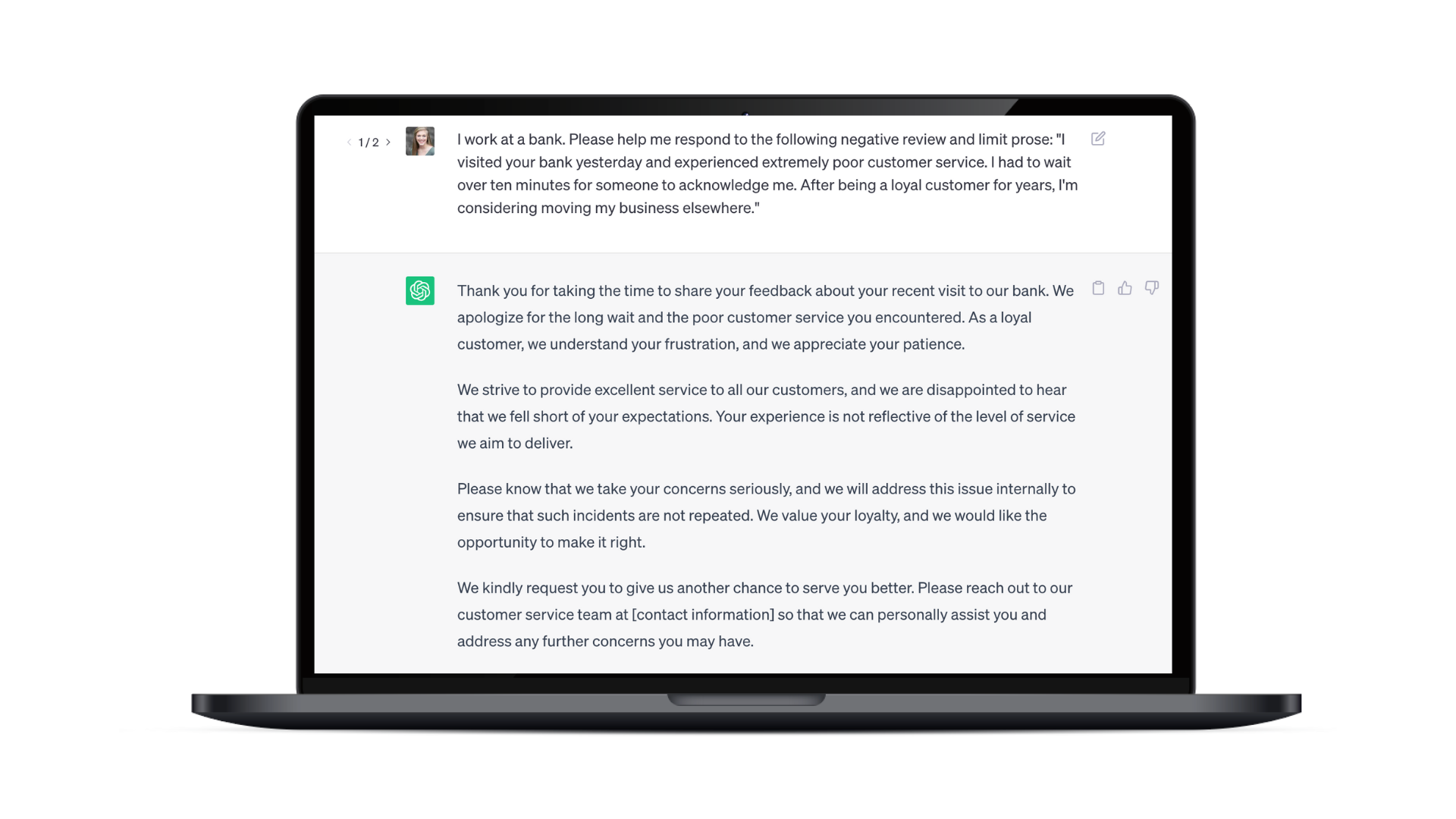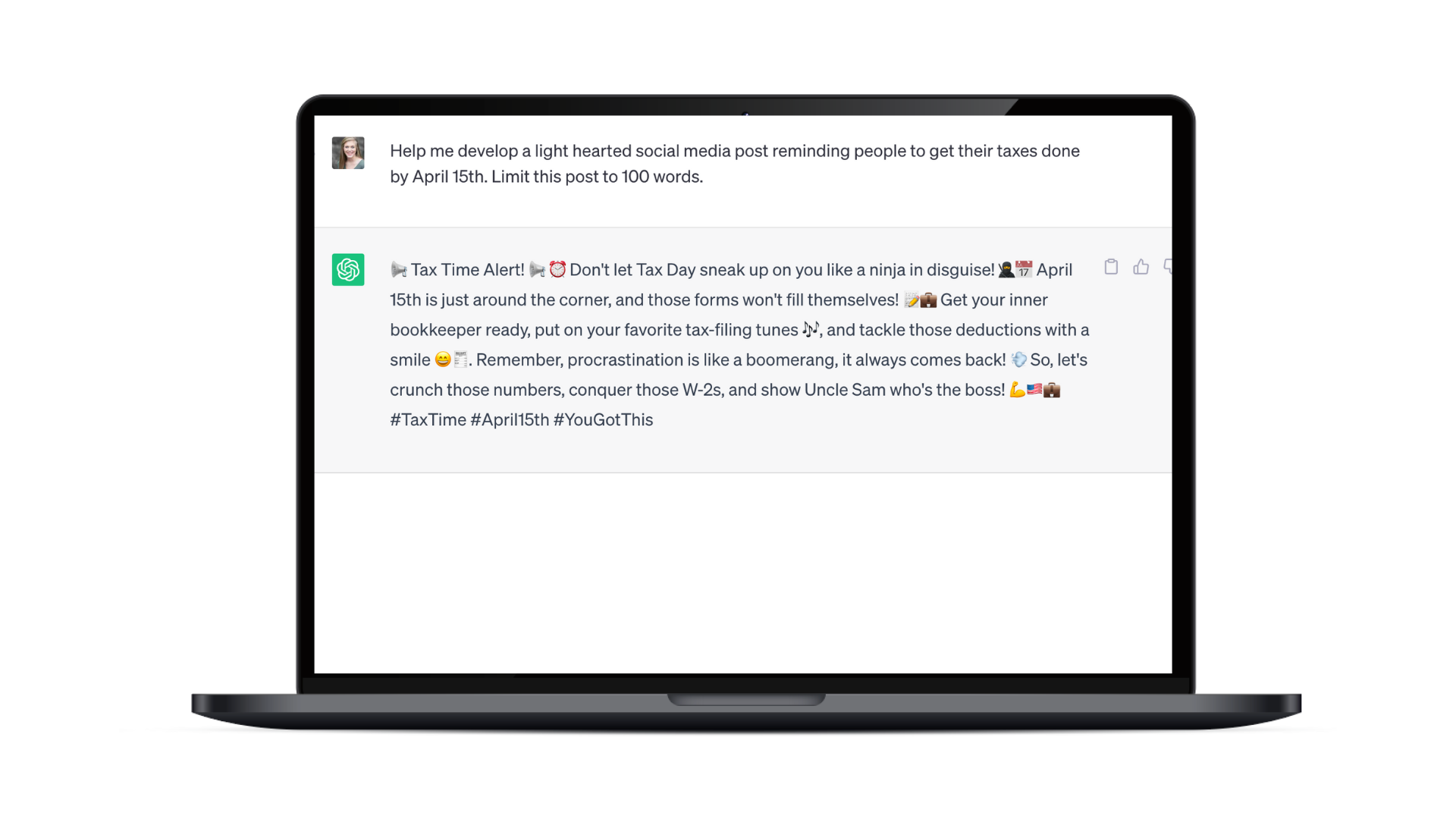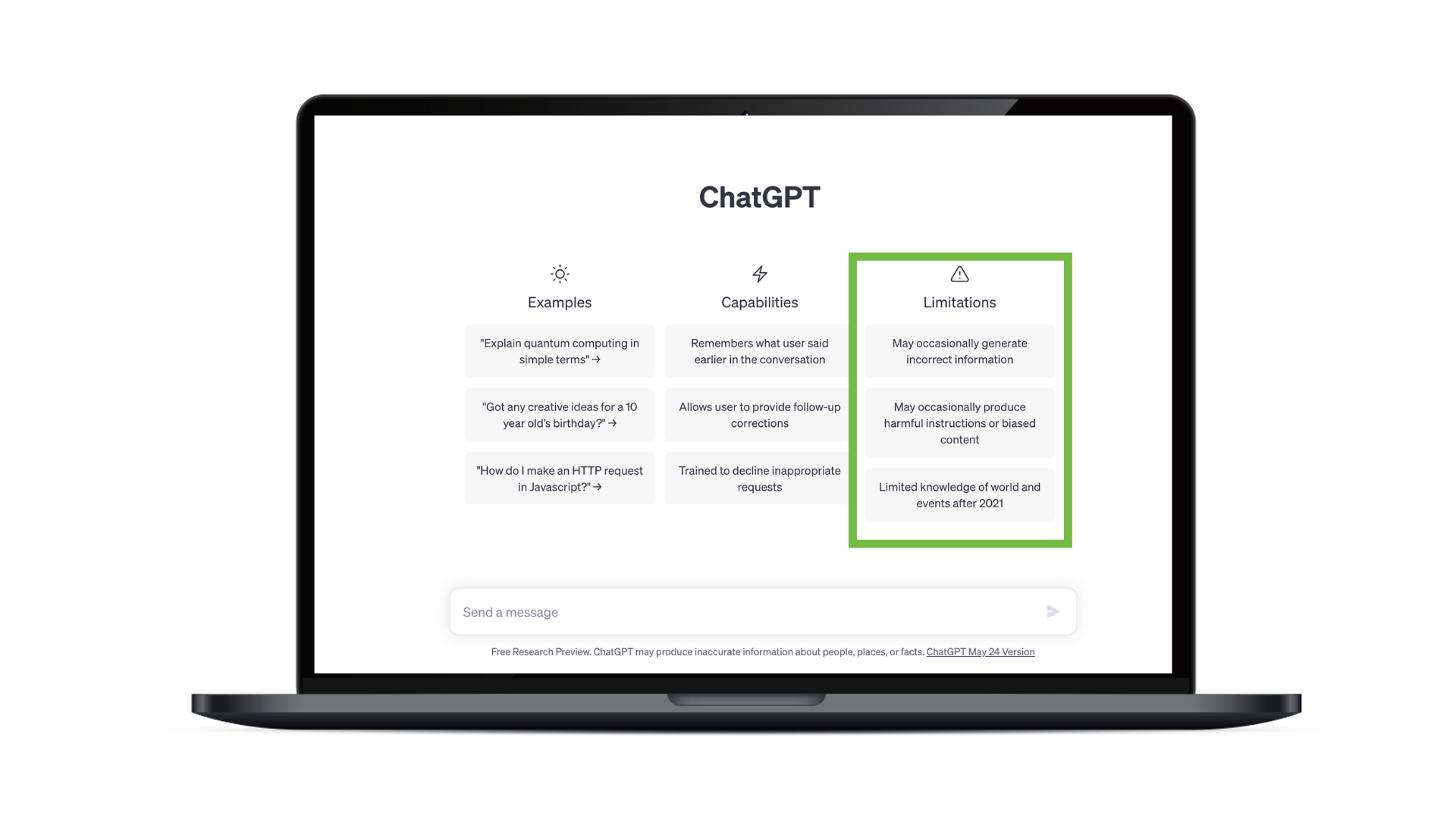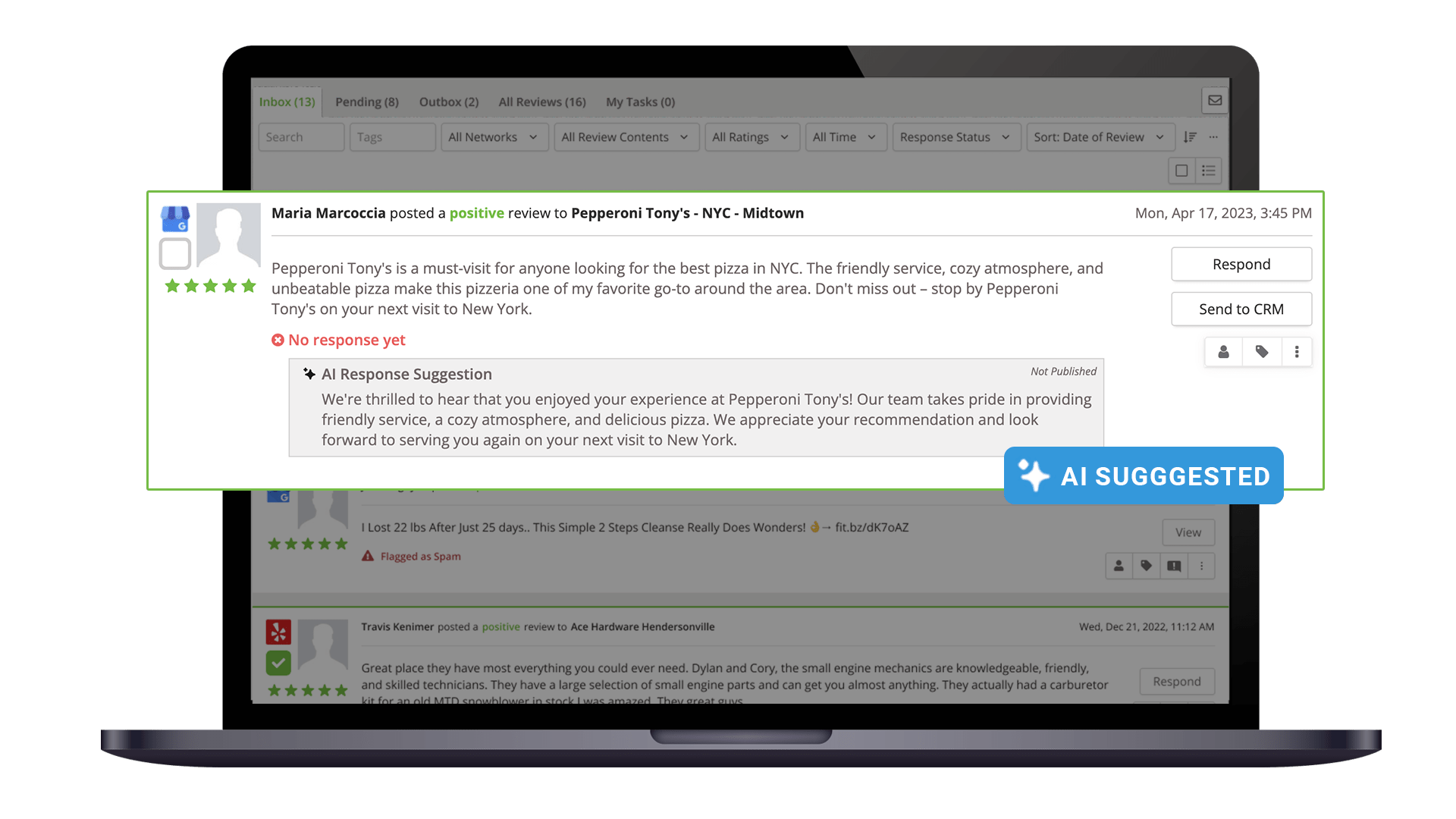How to Navigate Generative AI in the Regulated Industry of Financial Services

How to Navigate Generative AI in the Regulated Industry of Financial Services
As a marketer in the financial services industry, you’ve likely been hearing the buzz around artificial intelligence (AI). Over the past several months, there have been significant AI advancements. Many of these advancements can now help marketers uplevel their strategies. So what does this mean for you?
For financial services companies, regulation is critical, but this doesn’t mean you can’t explore AI! Within this blog, we’ll recap a recent webinar on how multi-location brands, including financial services companies, can transform marketing efforts with the help of AI. We’ll also share tactics that those in the regulated industry should pay extra attention to.
Let’s get started!
What is Generative AI in Marketing?
Before we get into generative AI, let’s first define AI as a whole. Artificial intelligence refers to machines capable of doing activities that generally require human intelligence. Generative AI — one of the most common and popular types of AI — creates an output, such as text, photos, videos, data, and beyond, from data they’re trained on.
That definition may seem complex, but in short, it’s a form of AI that produces an output based on patterns and examples it has learned from. We’re seeing marketers using generative AI more frequently to improve marketing efforts. Examples of generative AI include, but are not limited to, ChatGPT, Google’s Bard, and DALL-E.
Now that you understand generative AI, let’s discuss how to incorporate it into your localized marketing strategy.
Dominating Localized Marketing Through Generative AI
There are various ways that your financial services company can leverage generative AI. Our recent webinar focused on the top two most important ways marketers can use it today.
Better Customer Experiences
Nine out of ten consumers read online reviews before making a purchase decision. Additionally, only 53 percent of consumers would consider using a business with less than four stars. The data speaks for itself: reviews matter.
One of the most common ways we’ve started to see marketers leverage generative AI tools, such as ChatGPT, is for review responses. For instance, in the example below, we asked ChatGPT to help generate a response to a negative review that a bank received.

ChatGPT developed a well-thought-out and professional response to the review. If you want ChatGPT to shorten the response, add “limit prose,” as the example shows, or include “keep it 100 words or less.”
Keeping your customers happy is a must, and prompt and personalized review responses through generative AI can help.
Improved Content Creation
Generative AI tools can also help your brand create quality content that typically takes hours in minutes. First and foremost, marketers can leverage generative AI to optimize your brand’s profile pages. Take Google Business Profile, for example.
You can feed generative AI tools information about your business and ask it to develop a compelling and keyword-rich business description or a list of FAQs your business might receive along with responses.
Marketers can also use generative AI to brainstorm social and blog content ideas. You can take it further and ask the tool to generate a post for your company. Is your financial services company stuck on what to post for income tax day? Use AI!

The options are endless when it comes to using generative AI for content. As a financial services company, you can spend less time worrying about content creation and more time keeping customers happy.
Common Pitfalls to Avoid Using Generative AI
While generative AI has numerous benefits, it’s important to highlight common pitfalls your financial services company should be aware of.
At times, generative AI can produce inaccurate results or false information. As a financial services company, it’s essential to review the output of generative AI and make necessary adjustments. ChatGPT highlights its limitations on its website, including “[ChatGPT] may occasionally generate inaccurate responses.”

ChatGPT also doesn’t always include the most up-to-date information. Currently, the tool states that it only has limited knowledge of the world and events after September 2021. If you want to develop content on a more recent event, this is something to be aware of.
Lastly, generative AI is only as intelligent as you make it. It’s essential that you give these AI models detailed prompts. If you want the tool to write as a financial services expert, give it that direction. For instance, in the prompt you can say something like, “You’re a world-class mortgage broker who has been in the industry for over two decades.” Then, add your task to the prompt.
Similarly, if you’re concerned about the length of a post or review response, provide it with expectations, such as word or character limitations.
As you can see from these limitations, generative AI still requires a human touch — especially in financial services, where rules and regulations are critical to follow.
Find a Solution That Supports Your Generative AI Needs
While your teams might find it fun to leverage generative AI tools alone, what if we told you there was a tool to manage your localized marketing strategy while incorporating generative AI? Enter SOCi Genius.
The SOCi Genius platform provides financial services companies with actionable insights and recommendations for clients while automating their most important workflows at scale.
With SOCi, financial services companies can strengthen their clients’ digital presence across local search and social pages, all while:
- Maintaining compliance
- Protecting their online reputation
- Driving customer engagement
- Generating market-leading results.
As a part of SOCi Genius, we have Genius Reviews. SOCi Genius Reviews integrates our award-winning review response management tool with GPT-4 to transform how marketers respond to reviews.

It combines cutting-edge AI technology, advanced on-brand training models, and leading localization and automation tools to deliver a highly customizable and automated system for managing reviews.
For additional insight into SOCi Genius and how we can help you dominate your company’s localized marketing efforts through AI, request a demo!






